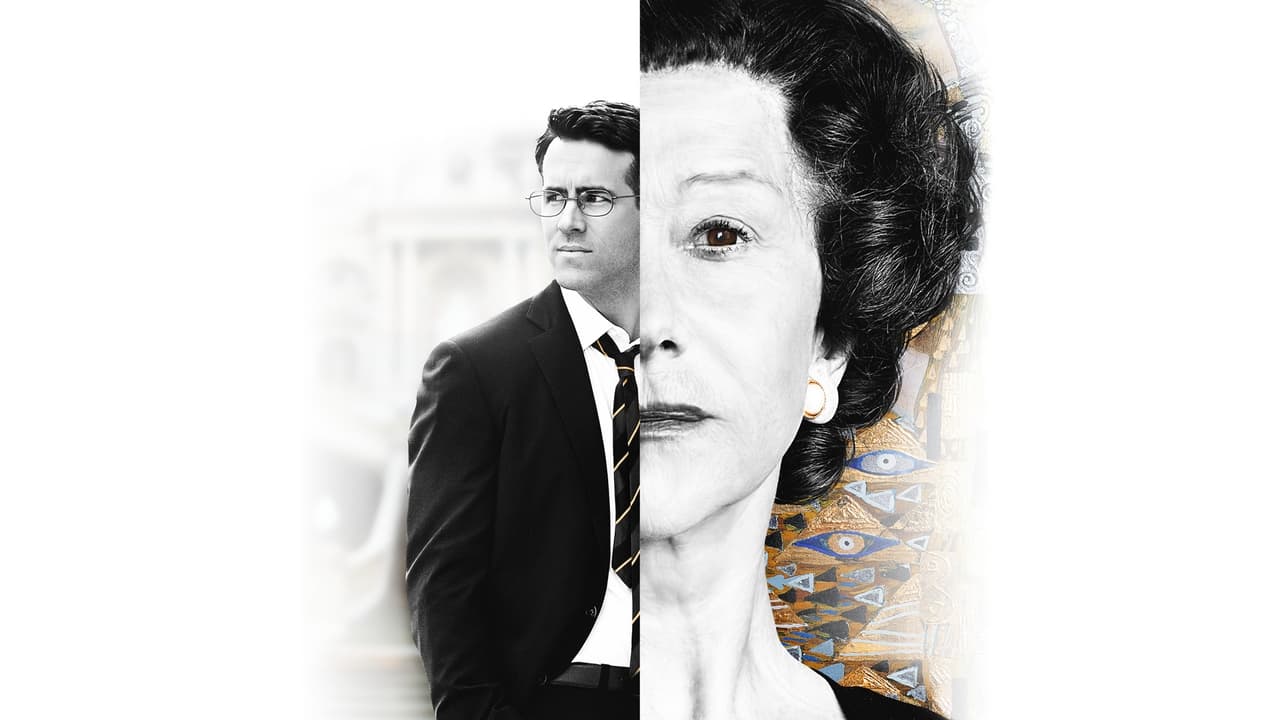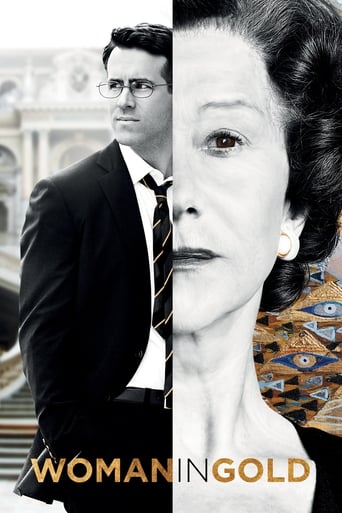

The "Woman in Gold" of the title is a painting, Gustav Klimt's "Portrait of Adele Bloch-Bauer I". (That Roman numeral was added to distinguish it from a second portrait of the same woman). Frau Bloch-Bauer was a beautiful young society lady from a wealthy Viennese Jewish family. She herself died in 1925, but the picture remained in the possession of her family until it was seized by the Nazis following the Anschluss of 1938. Klimt was not the Nazis' favourite artist- he was too modernistic for Hitler's ultra-conservative tastes- but he was not Jewish and was never officially condemned as "degenerate", so there was no ban on the public display of his art. In 1941 the painting was acquired by the Belvedere Gallery in Vienna where it hung for many years. (The Nazis were embarrassed by the fact that Klimt's sitter had been Jewish, so the name of the painting was changed to "Woman in Gold"). In 1998, however, Adele's last surviving relative, her niece Maria Altmann, now living in Los Angeles, began a legal fight to recover the stolen painting.The Austrian government resisted the claim doggedly, basing their opposition on the fact that in her will Adele had expressed the wish that the painting should hang in the Belvedere. There were, however, two problems with their defence. The first was that Adele had wished that the picture should only go to the Belvedere after the death of her husband Ferdinand, who was still alive in 1941. The second, and more serious, objection was that the painting was not actually Adele's to dispose of- it was legally Ferdinand's property, not hers.The film is based on the true story of this legal battle, concentrating on the relationship between Maria and her young lawyer, Randy Schoenberg. The two had a lot in common, both being descended from the cultured, intellectual Jewish haute bourgeoisie of Vienna. They shared a love of music; Randy was the grandson of the famous composer, Arnold Schoenberg, and Maria's late husband, Fritz, had been an opera singer. Intercut with the legal action are scenes showing Maria's early life and her flight from Vienna to escape from the Nazis in 1938.I watched this film when it was recently shown in television, partly because I am an art lover and partly because of my respect for Helen Mirren, but in many way it proved a disappointment. Mirren as Maria Altmann was certainly good, as she normally is, but she was about the only good thing in this film. There have been many excellent films based upon court cases, but such courtroom dramas have nearly all been about criminal trials, focussing on conflicting evidence and dramatic scenes of cross-examination in the witness-box. Civil actions, which rely more on legal argument and precedents and which may not even involve any testimony from live witnesses, rarely make for such engrossing drama.The case of Republic of Austria v. Altmann does not prove an exception to the rule. The lengthy scenes of discussions and legal arguments are worthy but wordy, and the flashbacks to the 1930s (for some reason shot in a very dull, muted colour) do not provide much relief from the tedium. (We know from the beginning that Maria will survive, so there is little tension). The story of the wholesale looting of European art by the Nazis, of the legal fight for restitution and of the various moral issues involved is a potentially fascinating one; it deserved a better cinematic treatment than this. 5/10
... View MoreMy original perception was that this was an indie flick that only played in the art houses because it was an artsy film. the truth is that it's a great film that simply didn't get the luck of the draw when it came with mass distribution. Woman in Gold would be at home with any of the Oscar nominees and contenders and would easily be considered more of an outright crowd pleaser than a film like Danish Girl (which got nominated in acting categories) or Brooklyn (which did make the final cut for Oscar). The film is based on an eight-year-long quest by a California-based lawyer of Austrian descent and a longtime family friend from the motherland (the prior relationship between the characters is erased in the adaptation process) to reclaim confiscated art by the Nazis. The film's main strength is that it's neither a holocaust story nor is it a standard courtroom drama, but it's a fresh new take on both genres. As for the former, the film feels fresh through its specificity to the Austrian experience and the specificity of a wealthy family. The film is more relatable to the experience of anyone descended of an immigrant who had to leave the old regime. As for the latter, the film's main challenge wasn't showing a guy having his flashy day in court but rather a long slog as it was taking a toll on his life. The film handles this challenge in pacing admirably. More than that, the film flies on the strength of its central relationship. You never think of Ryan Reynolds (best known for subversive leading men or a smug action stars) and Helen Mirren as occupying the same universe but the chemistry between the two goes a long way towards making this film transformative. The film is a powerful one about remembrance and loss. It teaches that one can't fix the past, but healing those wounds is a noble cause.
... View MoreI watched the trailer and immediately was drawn to this for several reasons - namely Helen Mirren is one of my favorite actresses and I knew she would do well in this role, and also the fact that this was based on true events dealing with such an incredible part of our history that shouldn't be forgotten. They story line was well laid out and kept me very invested through the entire movie, and I was surprised at how involved Ryan Reynolds becomes personally involved in the adventure. The history that was woven into the present day was absolutely top notch - magical. I was so affected after it was over - it really made me reflect on my heritage and about my posterity. I think everyone should watch this movie.
... View MoreThis movie brings together an unlikely cast of Helen Mirren, Ryan Reynolds and Daniel Bruhl in what I found to be a highly satisfying drama, based on a true story concerning a great work of art by painter Gustav Klimt from from early 20th century Venna. I have always admired Helen Mirren's acting and I knew about Klimt from an exhibit at the National Gallery in Ottawa, some 15 years ago. We learn the background through a series of flashbacks that play through Mirren's memory as Maria Altmann, the child of a highly cultured family in Vienna, who were targeted by the Nazis during the occupation of Austria in World War II. She lived through the Nazi reign of terror during which Jewish families were humiliated, their property stolen and eventually they were deported to death camps. (There is one highly-charged chase scene that took place on foot through streets, and dark passages that had me on the edge of my seat.) As an older woman living in Pasadena she becomes acquainted with a young lawyer who is also part of her extended family. Ryan Reynolds as Arnold Schoenberg is at first reluctant to take on a mission to recover a work of art; he is busy starting a career and family, when they meet. However, he becomes engrossed with Maria's sister "The Woman in Gold", one of Klimt's paintings and soon becomes the catalyst keeping Mirren focused on her goal of getting some justice done. Daniel Bruhl, as a young Austrian journalist trying to erase the stain of Austria's flirtation with the Nazis, is their chief contact in the fight against a few arrogant elitists who seem to have learned nothing from their country's history. All told, it was a great movie--entertaining and tragic both but lightened by touches of humour and an alliance among three different people trying to deal with the evils of the past.
... View More